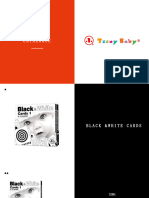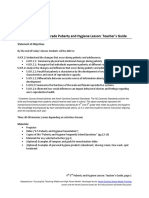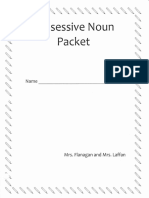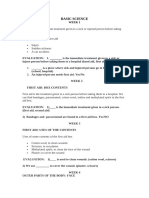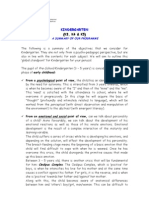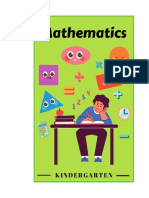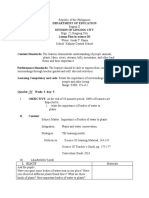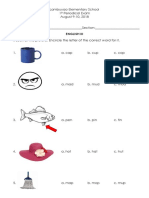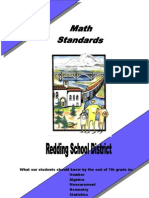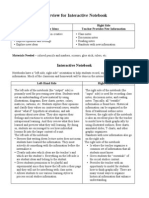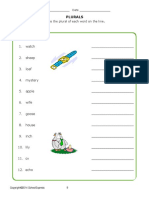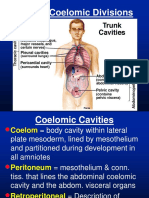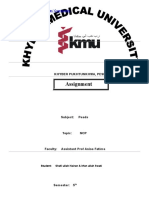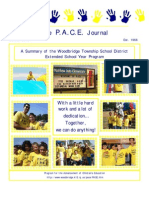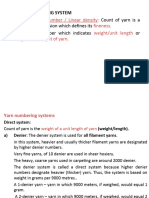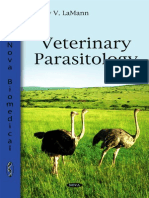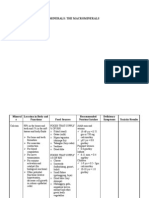Grade 1 Science
Grade 1 Science
Uploaded by
NHIMMALAYCopyright:
Available Formats
Grade 1 Science
Grade 1 Science
Uploaded by
NHIMMALAYOriginal Title
Copyright
Available Formats
Share this document
Did you find this document useful?
Is this content inappropriate?
Copyright:
Available Formats
Grade 1 Science
Grade 1 Science
Uploaded by
NHIMMALAYCopyright:
Available Formats
REVISED PRIMARY SCIENCE CURRICULUM GUIDE
GRADE / LEVEL 1
Unit 1:Human Body Parts of the body and their roles for healthy living
Topic
External
parts of
the body.
Objective
Knowledge
Skills
Identify and Observe
name at
and
least ten
recognise
external
the
parts of the
external
body.
parts of
the body.
Content
Attitude
Display
respect for
ones body,
its parts
and that of
others.
(Avoid
touching
the body
parts of
another
person
without
his/her
approval.)
External body
parts include the
head, eye, ear,
nose, mouth, lip,
neck shoulder,
chest, back,
buttock, hip,
penis, vulva, arm,
elbow, wrist, hand,
finger, leg, knee,
ankle, foot, toe.
Method/Strategies
1. Individual pupils identify
and name external parts of
the body.
2. On a large outline drawing
of the human body pupils
place
a) picture of corresponding
body part.
b) label/name of body part.
c) picture with label/name of
body part.
3. Pupils use songs/games
with actions as
reinforcement e.g. Song:
Head, shoulders, knees
and toes.
Pupils touch the different
parts
Game: Simple Sunil
says
Put your hands in the air,
touch your toes, etc.
Pupils display actions.
Materials
Evaluation
Integration
Large
outline
drawing
of the
human
body.
Pupils
identify and
name at
least ten
body parts.
On outline
drawing of
the human
body did
pupils place
picture and
corresponding
label/name
of body part.
Art and
Craft
-drawing of
human body.
Language
Arts - Songs
Pictures,
labels and
names of
body
parts.
Language
Arts -Songs.
Physical
Education Hand-eye
coordination
through
songs and
games.
January 2003
1
REVISED PRIMARY SCIENCE CURRICULUM GUIDE
GRADE / LEVEL 1
Unit 1:Human Body Parts of the body and their roles for healthy living
Topic
External
parts of
the body.
Objective
Knowledge
Skills
State how
Count
many of
how
each of the
many of
external
each of
parts one
the
has.
external
parts one
has
Record
how
many of
these
parts one
has
Content
Attitude
Display
respect for
ones body
and its
parts.
(Avoid
touching
the body
parts of
another
person
without
his/her
approval.)
We have:
One: head, nose,
mouth,
neck, chest,
back, penis,
vulva,
Two: eyes, ears,
lips,
shoulders,
buttocks,
hips, arms,
elbows,
wrists,
hands, legs,
knees,
ankles, feet.
Ten: fingers, toes
Method/Strategies
1. Pupils identify external
parts of the body and say
how many of each he/she
has.
2. Using pictures and
labels/names of body parts
from previous lessons,
pupils match parts with
flash cards of numbers.
3. Pupils group body parts
with respect to how many
they have.
4. Pupils make drawings of
themselves.
Materials
Evaluation
Integration
Pictures,
labels/
names of
body parts
Flash
cards,
each with
one
number:1,
2 and 10.
Verify that
pupils can
match each
body part
with
correspond
-ing flash
card.
Mathematics
Number
conceptscounting.
Check
drawings
for correct
number of
body parts.
Art making
drawings.
(Note: No need to draw
reproductive organs.)
January 2003
2
REVISED PRIMARY SCIENCE CURRICULUM GUIDE
GRADE / LEVEL 1
Unit 1:Human Body Parts of the body and their roles for healthy living
Topic
Uses of
External
Parts of
the Body.
Objective
Knowledge
Skills
Match the
Commuuses of at
nicate
least ten
informati
external
on body
parts of the
parts
body
through
including
role play.
the five
sense
organs.
Attitude
Appreciate
that each
external
part of the
body has
an
important
use.
Content
Method/Strategies
Materials
Evaluation
Integration
Uses of body parts
include:
Mouth eating,
speaking
Eye seeing
Ear hearing
Nose smelling
Skin feeling
Hip supporting
legs
Ankle movement
of foot, etc.
1. Class is divided into small
groups.
2. Each group is given the
pictures and/or names of
three
different body parts.
3. Individual pupils give the
use of a specific part.
4. Other students then role
play the uses of these body
parts to the rest of the class.
5. Pupils match body part with
stated use:
a) using flash cards (one
set from previous
lesson with picture and
name of body parts the
other set with use of
body part).
b) in the form of a table.
Pictures,
labels/
names of
body parts
(from
previous
lesson)
Matching
body parts
with uses.
Drama
through role
playing.
Part of Body
Mouth
Eye
Fingers
Skin
Use
eating,
speaking
seeing
holding
feeling
January 2003
3
REVISED PRIMARY SCIENCE CURRICULUM GUIDE
GRADE / LEVEL 1
Unit 1:Human Body Parts of the body and their roles for healthy living
Topic
Good
Health
Practices
Objective
Knowledge
Skills
Distinguish
Commun
between
icate
healthy and informaunhealthy
tion
foods.
about
foods
through
oral
presentation and
art.
Understand
the
importance
of exercise.
Record
exercise
performed over a
period of
time
Content
Attitude
Develop
healthy
eating
habits.
Develop a
willingness
to perform
exercises.
Method/Strategies
Materials
Evaluation
Integration
Pupils
identify
some
healthy and
unhealthy
foods.
Teacher
checks
drawings,
models or
collages of
foods made
by pupils.
Health and
Family Life
Education
Healthy
Habits.
Teacher
checks
drawings
done by
pupils and
table
showing
exercises
performed
by pupils.
Physical
Education
simple body
exercises.
Fruits, vegetables,
milk and water are
some healthy foods.
Fried foods such as
chips, sweets and
aerated drinks are
unhealthy if used
often.
1. Pupils bring samples of
their favourite foods.
2. Teacher provides samples
of some healthy and
unhealthy foods.
3. Pupils show class their
favourite food and class
says whether food is
healthy or unhealthy.
4. Pupils make drawings,
models or collages of
foods that make up a
balanced meal.
(This will be done
individually or in groups.)
Samples
of foods.
paper,
cardboard,
pictures of
foods.
Some exercises are
walking, running,
jumping, skipping,
stretching, bending,
jogging.
Exercises make our
limbs move freely
and develop
properly.
1. Pupils perform a series of
exercises outside the
classroom.
2. Class discuss benefits of
exercising.
3. Pupils make simple
drawings of themselves
exercising.
4. Pupils record in table
form exercises performed
during a week as follows:
Skipping
-ropes
Balls
hoops, etc
Art and
Craft
drawing,
model and
collage
making.
Art drawing
January 2003
4
REVISED PRIMARY SCIENCE CURRICULUM GUIDE
GRADE / LEVEL 1
Unit 1:Human Body Parts of the body and their roles for healthy living
Topic
Objective
Knowledge
Skills
Content
Method/Strategies
Materials
Evaluation
Integration
Reference
Book:
Exploring
Careers in
CHILD
CARE by
Marilyn
McFarland
Pupils
identify five
goods health
practices.
Pupils say
why each
practice is
good or
desirable.
Health and
Family Life
Education
Healthy
Practices.
Attitude
Day Exercise Performed
..
Good
Health
Practices.
Understand
the value of
at least five
good health
practices.
Develop a
willingness
to display
good health
practices.
Healthy activities and
habits are needed for
good health. Some
good health practices
are:
- eating balanced
meals
- breathing clean air
- playing safely
- performing
exercises
- keeping the
environment
clean and safe.
- thinking positively
- getting adequate
rest
- visiting doctor and
dentist regularly.
Developed as summary
from previous lesson
1. Pupils state the healthy
activities and habits.
2. Pupils and teacher discuss
same during class
discussion.
Reference:
Exploring careers in
CHILD CARE by Marilyn
McFarland, Page. 131.
(Page attached)
January 2003
5
REVISED PRIMARY SCIENCE CURRICULUM GUIDE
GRADE / LEVEL 1
Unit 2:Animal Kingdom The variety, features and life processes of animals
Topic
Common
Animals
in the
Environment
Objective
Knowledge
Skills
Recognise
Observe
that there is and
a wide
record
variety of
which
animals.
animals
are in the
Identify and environname at
ment.
least five
animals.
Attitude
Appreciate
that
animals
other than
man are
found in
the
environment.
Content
Method/Strategies
Materials
Evaluation
Integration
Some common
animals are. man,
dog, cat, cow, horse,
bird, fish, ant, fly,
worm.
Thus, there is a wide
variety of animals in
the environment.
Lesson 1: Visit to School Yard
Adequate preparation must be
made for the visit.
1. Teacher should visit the
area (school yard) at least
one day earlier.
2. Class should be divided
into small groups before
they are taken on visit.
3. Pupils observe animals and
collect a specimen per
group where possible and
safe and in appropriate
containers.
4. Collected specimens of
animals are displayed in
class and further
observations make.
Equipment for
field trip
including
clear
plastic
bags, jars,
tweezers,
gloves,
magnifying glass,
tags.
Did pupils
follow
instructions?
School Yard
Ecologyobserving
components
of the
environment
Develop a
respect for
animal life
by
avoiding
injury or
harm to
them.
Lesson 2:
1. Teacher leads pupils into
making conclusions such
as.
a) Which was the most
common animal?
b) Which was the least
common animal?
Did pupils
collect
specimens?
Did pupils
enjoy
working in
groups?
Specimens Which was
collected. the most
common
Pictures of animal?
animals
Which was
the least
common
animal?
Mathematics counting
January 2003
6
REVISED PRIMARY SCIENCE CURRICULUM GUIDE
GRADE / LEVEL 1
Unit 2:Animal Kingdom The variety, features and life processes of animals
Topic
Objective
Knowledge
Skills
Content
Method/Strategies
Recognise
that the
external
parts of
animals may
be similar or
different.
Observe
the
external
parts or
features
of
animals.
Evaluation
Integration
Attitude
2. Teacher and pupils
provide and observe
pictures of some other
animals
External
Parts of
Animals.
Materials
Appreciate
that
animals
differ in
their
external
features.
The external or outer
parts of animals
include the head,
limbs and body
coverings. The limbs
include the arm, leg,
fins and tail, while
the body coverings
include skin, hair, fur
and scales.
1. Pupils observe animals
collected during visit to
school yard.
2. Where possible pupils
and teacher bring pets to
school and observe their
external parts. (Pets could
include bird, cat, puppy,
fish)
(Safety and health
precautions must be
observed.)
3. Teacher and pupils
provide and observe
pictures of some common
animals.
4. Pupils make simple
drawings of at least two
different animals their pet
and another.
Pupils name
five
animals.
Specimens
from visit Pupils name
to school
at least five
yard Pets. external
parts of
animals.
Pictures of
animals.
Pupils state
at least three
similarities
Text book and three
Science differences
Around
between the
Us
external
Book 2.
parts of
animals
Art
drawing of
animals
Language
Art
reciting a
poem.
January 2003
7
REVISED PRIMARY SCIENCE CURRICULUM GUIDE
GRADE / LEVEL 1
Unit 2:Animal Kingdom The variety, features and life processes of animals
Topic
Objective
Knowledge
Skills
Content
Method/Strategies
Materials
Evaluation
Integration
Clear,
transparent
container
as an
aquarium
e.g.
corked 2
or 3 litre
aerated
plastic
bottle/jar.
What did
each animal
do?
Agricultural
Science
Rearing of
animals.
Attitude
5. Pupils state at least
three similarities and three
differences between the
external parts of the two
animals.
6. Information shared to
whole class.
7. Students read poem on
animals, Ref. Science
Around Us, Book 2 Page
13.
Some
Life
Processes
of
Animals
State four of
the five
obvious life
processes of
animals.
Manipulate
simple
equipment in
setting up
and
maintaining the
home of
some
domestic
animals.
Develop an
interest in
and love
for
animals.
Develop
the need to
handle
animals
with care.
Some obvious life
processes of animals
are feeding,
breathing, growing,
moving and
sensising.
Sensitivity is the
response of animals
and plants to things in
their surroundings,
such as food, heat,
light, sound, touch
and danger.
(This topic lends itself to
project work. As such, it may,
take about one month to
complete.)
Here is a suggested sequence
of activities.
1. Decide which animals will
be observed eg. Fish, bird,
rabbit, chick, insect, worm,
etc.
Did it feed,
move,
breathe, etc?
Did it
increase in
size?
Art
drawing of
animals.
January 2003
8
REVISED PRIMARY SCIENCE CURRICULUM GUIDE
GRADE / LEVEL 1
Unit 2:Animal Kingdom The variety, features and life processes of animals
Topic
Objective
Knowledge
Skills
Observe
animals
carrying
out some
life
processes
Content
Method/Strategies
Materials
Evaluation
Cage for
bird
chick,
rabbit.
Did pupils
take
precautions
in handling
and caring
for animals?
Integration
Attitude
2. Set up home for animals
e.g. aquarium, cage, pen.
3. Pupils work in pairs,
each day they will feed,
observe animals and clean
their homes.
4. Pupils record
observations
in the form of a table.
5. Pupils share
observations with the whole
class. This could take the
form of a whole lesson.
6. Students make simple
drawings of the animals
they cared.
Food for
animals.
NOTE: Some animals may
require attention
during weekends
January 2003
9
REVISED PRIMARY SCIENCE CURRICULUM GUIDE
GRADE / LEVEL 1
Unit 3:Plant Kingdom The variety, features and life processes of plants
Topic
Germination of a
seed.
Objective
Knowledge
Skills
State that a
Manipuseed
late
germinates
simple
into a
equipseedling.
ment and
materials
in setting
up
experiment.
Predict
what will
happen to
the seed.
Observe
the
germination of a
seed.
Record
observations.
Content
Attitude
Display
attention
and care in
dealing
with plants.
Treat plants
with
respect.
A seed grows into a
plant. This process is
called germination.
The young plant is
called a seedling.
Method/Strategies
It would require about two
weeks to cover this topic.
Lesson 1: Setting up
experiment
(germination
apparatus)
Lesson 2: Spread over 10
days of 5 minutes
each day..
Lesson 3: Summarising
observations as a
class.
Lesson 1
1. Pupils set up germination
apparatus as follows:
- use transparent plastic
or glass jar eg. jam or
nut butter.
- line the inside of the jar
with about three layers
of absorbent paper eg.
newspaper or news
print paper.
- pour water into jar to a
depth of about 2 cm
high.
Materials
Evaluation
Integration
Seeds
bora,
bean,
corn,
paddy.
Were pupils
able to set
up the
germination
apparatus?
Agriculture
kitchen
gardening.
Plastic/
glass jar
eg. jam or
nut butter.
Newspaper or
news print
paper.
Did pupils
make
plausible or
realistic
predictions?
Rice
farming
-broadcast
of soaked
paddy.
Water
January 2003
10
REVISED PRIMARY SCIENCE CURRICULUM GUIDE
GRADE / LEVEL 1
Unit 3:Plant Kingdom The variety, features and life processes of plants
Topic
Objective
Knowledge
Skills
Content
Method/Strategies
Materials
Evaluation
Integration
Attitude
place a 2-day old
soaked seed between
paper and inner surface
of jar at a height of
about 2 cm above the
water level.
- leave jar where it can be
observed.
2. Pupils make predictions
of what will happen to
the seed.
January 2003
11
REVISED PRIMARY SCIENCE CURRICULUM GUIDE
GRADE /LEVEL 1
Unit 3:Plant Kingdom The variety, features and life processes of plants
Topic
Objective
Knowledge
Skills
Content
Method/Strategies
Materials
Evaluation
Lesson 2:
Spread over at least 10 days of
5 minutes each day.
Germinating seeds.
Verify
observations
made by
pupils.
Germinating seeds.
Did pupils
observe
what
happened to
the seed?
What was
the purpose
of the paper
in the jar?
Integration
Attitude
1. Pupils observe germinating
seed.
2. Teacher asks pupils about
their observations and
verify same with them.
Poem: The Seed
In the heart of a seed
buried deep, so deep.
A dear, little plant lay
fast asleep.
Wake ! said the
sunshine and peep to
the light.
Wake ! said the
voice of the raindrops
bright.
The little plant heard,
and it rose to see.
What a wonderful
outside, the world
may be.
Lesson 3:
1. In groups of about 4, pupils
compare their seedlings
with respect to:
- changes in appearance
of seed.
- shape, colour and size
of parts of the
seedlings.
2. Groups share observations
in class discussion and
compare them with the
predictions made in
Lesson 1.
3. Pupils pretend to be seeds
and dramatise their
germination.
Can pupils
recognise
the main
parts of a
seedling?
January 2003
12
REVISED PRIMARY SCIENCE CURRICULUM GUIDE
GRADE / LEVEL 1
Unit 3:Plant Kingdom The variety, features and life processes of plants
Topic
Objective
Knowledge
Skills
Content
Method/Strategies
Materials
Recognise
that there is
a wide
variety of
plants.
Identify and
name at
least five
plants.
Observe
and
record
which
plants are
in the
environment.
Interpret
data.
Integration
Attitude
4. Pupils recite poem on
seeds.
Common
Plants in
the
Environment.
Evaluation
Develop a
respect for
plant life.
Display
interest in
plants.
There is a wide
variety of plants in
the environment.
Plants are usually
green and they vary
in size. Small plants
are called herbs eg.
thyme, celery, bora,
grass.
Bigger or taller plants
are called trees eg.
Mango, coconut,
green heart.
Lesson 1:
Visit to School Yard
1. Adequate preparation to be
made for visit.
2. Teacher gives pupils clear
instructions.
3. Class is divided into small
groups.
4. Pupils observe plants
present in the environment
and collect, where possible
and safe, a sample of small
plants and parts of big
plants
Can pupils
distinguish
between a
seed and a
seedling?
How did the
pupils attend
to the
seedlings?
Did the
pupils show
care for the
seedlings?
Equipment for
field visit
clear,
plastic
(cellophane)
bag,
pocket
magnifer
or hand
lens.
Which was
the most
common/
least
common
plant?
Incorporating School
Yard
Ecology
Pupils to
name at
least plants.
Did pupils
work well in
groups?
January 2003
13
REVISED PRIMARY SCIENCE CURRICULUM GUIDE
GRADE / LEVEL 1
Unit 3:Plant Kingdom The variety, features and life processes of plants
Topic
Knowledge
Objective
Skills
Content
Method/Strategies
Materials
Evaluation
Integration
Attitude
(Only one set of samples
per group.)
5. Collected samples are
displayed in classroom and
observed further.
6. Class discussion on
samples collected. Pupils.
to conclude:
a) Which was the most
common plant?
b) Which was the least
common plant?
Lesson 2
Working in same groups for
Lesson 1, pupils make collage
of samples collected.
Did the
pupils
display
respect for
plant life?
Cardboard,
paper,
glue.
Did the
collage
reflect the
variety in
the samples?
Art & Craft
making
collages.
Did the
pupils enjoy
making the
collage?
January 2003
14
REVISED PRIMARY SCIENCE CURRICULUM GUIDE
GRADE/LEVEL 1
Unit 3:Plant Kingdom The variety, features and life processes of plants
Topic
Main
Parts of a
Plant.
Objective
Knowledge
Skills
Identify and Observe
name the
and
five main
recognise
parts of a
the
plant.
external
parts of a
plant.
Content
Attitude
Develop
respect for
plants by
avoiding
damage to
them.
The main external
parts of a plant are
leaf, stem, flower,
fruits and root.
Some plants do not
have flowers and
fruits.
Method/Strategies
Materials
Evaluation
Integration
1. Each pupil will have a
small flowering plant either
brought from home
or collected from school
yard.
Plants
with most
or all main
parts.
Did pupils
bring
suitable
specimens?
Reinforcing
School Yard
Ecology.
2. Pupils identify parts and
point out same to class at
the request of teacher.
Drawing
of a plant,
labels and
names of
parts of
plant
done on
cardboard.
Did pupils
collect more
specimens
than were
necessary?
3. On a large drawing of a
plant done on cardboard.
Pupils place label / name of
plant part.
4. Pupils make simple
drawing of plant and label
main parts.
Note: Pupils should not
collect more specimen
than necessary
Did pupils
place
names/
labels of
parts at
correct
positions?
In their
drawings
did pupils
name parts
correctly,
that is, was
the labelling
correct?
Art
Drawing and
labelling of
parts of
plants.
January 2003
15
REVISED PRIMARY SCIENCE CURRICULUM GUIDE
GRADE / LEVEL 1
Unit 3:Plant Kingdom The variety, features and life processes of plants
Topic
Main
uses of
Plants
Objective
Knowledge
Skills
State at least
three uses of
plants.
Content
Attitude
Develop
respect for
plant life.
Plants have many
uses. Their leaves,
fruits and roots are
used as food by man
and some animals.
The tree trunk is used
to make wood for fire
and board for
buildings.
Plants are also used
as shelter and home
for animals such as
birds.
Method/Strategies
1. Teacher asks pupils to
identify uses of plants, or
parts of plants.
2. Pupils react to answers.
3. Teachers provides other
answers.
1. Pupils observe
- Specimens of parts in
their natural, preserved
or decorated form.
- Samples of wood, wood
products, bird nest, etc
- Pictures showing uses
of plants and their parts.
Materials
Evaluation
Integration
Samples
of fruits,
edible
leaves,
stems,
roots
Small
samples of
wood,
wood
products,
bird nes,
etc.
Were
samples
useful?
Were
pictures
meaningful?
Health and
Family Life
Education
Food
sources.
Pictures of
- plants
with
fruits.
- wood or
lumber
- birds and
other
animals
on trees.
Art & Craft
Flowers as
Decoration.
Were pupils
able to give
realistic
answers?
Pupils give
at least three
uses of
plants.
Technology
Education
Wood /
Lumber.
January 2003
16
REVISED PRIMARY SCIENCE CURRICULUM GUIDE
GRADE / LEVEL 1
Unit 4:Environment Components of the environment and their inter-relations
Topic
Things in
the
surroundings
Differences
between
living
and nonliving
things.
Objective
Knowledge
Skills
Identify and Grouping
name things things
which are
found in
found in the the
surroundsurroundings
ings
including
the home.
Identify and
name the
main
differences
between
living and
non-living
things.
Observing
activities
that
distinguish
living
things
from
nonliving
things.
Content
Method/Strategies
Materials
Evaluation
Integration
Many different things
are found in the
environment.
These include
animals, plants,
buildings, vehicles,
wares, tools, books,
clothing, etc.
1. Pupils identify and name
things found in their homes
and the wider environment.
2. Each pupil should be
allowed to name at least
three things.
3. Group things as animals,
plants, buildings vehicles,
wares, tools, books,
clothing, etc.
Pictures or
photographs of
living and
non-living
things.
Did pupils
have
difficulty in
identifying
things?
School Yard
Ecology
Attitude
Living things plants,
That is and animals
can feed, grow move
and reproduce.
cannot do all of these
activities, but may be
able to do some.
1. Pupils state what living
things can do but nonliving things cannot.
2. Pupils demonstrate the
action of feeding, growth
and movement.
Books
Actual
items or
things
where
possible.
Pictures /
photographs of
animals
and plants
involved
in
different
activities.
Each pupil
to name at
least three
things.
Were pupils
able to
group
things?
Were pupils
able to state
differences?
How
meaningful
were the
demonstrated actions?
Physical
Education
action or
movement
of body
limbs.
January 2003
17
REVISED PRIMARY SCIENCE CURRICULUM GUIDE
GRADE / LEVEL 1
Unit 4: Environment - Components of the environment and their inter-relations
Topic
Living
and nonliving
things.
Objective
Knowledge
Skills
Identify
Grouping
things as
things
living or
based on
non-living.
observations.
Content
Method/Strategies
Materials
Evaluation
Integration
Those
used in
previous
lesson.
Did pupils
have
difficulty in
grouping
things?
School Yard
Ecology.
Attitude
All things can be
grouped as living or
non-living.
Living things have
life which non-living
things do not have
life.
Our surroundings are
made up of living and
non-living things.
1. Using evidence or
information from previous
lesson pupils will decide
whether the thing / object is
living or non-living.
2. Teacher verifies pupils
answers.
3. Teacher sums up the main
parts of the surroundings
and introduces the term
environment as another
name for the surroundings.
Pupils to
name the
two main
groups of
things.
Pupils
explain what
is meant by
the terms
surroundings and
environment.
The living things are
plants and animals.
Non-living things
include the soil, water
and air.
Our surroundings are
also called our
environment.
January 2003
18
REVISED PRIMARY SCIENCE CURRICULUM GUIDE
GRADE / LEVEL 1
Unit 5: Weather- Types, Features and Effects of the Weather
Topic
Weather
Types
Weather
Symbols
Objective
Knowledge
Skills
Recognise
Observe
different
actions
weather
weather
types
types and
pictures
showing
same.
Use
symbols
to represent
different
weathers
conditions.
Content
Method/Strategies
Materials
Evaluation
Integration
The common weather
conditions include
sunny, cloudy, rainy,
and windy.
1. Pupils observe through
window/door the weather
condition of the day.
2. Teacher provides pictures
depicting different weather
conditions.
3. Pupils match flash cards
with names of weather
conditions and
corresponding pictures.
4. Pupils make a mobile
showing different types of
weather eg. Pictures of sun,
clouds, rain drops, etc.,
hanging from it.
Pictures of
different
weather
conditions
How
accurate
were pupils
observations
of actual
weather?
Social
Studies the
weather.
1. Pupils match each symbol
with weather condition i.e.
pictures and flash cards.
2. Teacher verifies pupils
responses.
Separate
flash cards
with
symbols
and
weather
conditions
Newspapers
Attitude
Weather conditions
can be represented by
different symbols eg.
Sunny
Cloudy
Homework: Read weather
forecast in newspaper, listen
Flash
cards with
names of
weather
conditions
Were pupils
able to
interpret
picture?
Was
matching of
cards with
pictures
easy or
difficult?
Were pupils
able to
match
symbol with
weather
condition?
Social
Studies
weather
conditions
January 2003
19
REVISED PRIMARY SCIENCE CURRICULUM GUIDE
GRADE / LEVEL 1
Unit 5: Weather- Types, Features and Effects of the Weather
Topic
Objective
Knowledge
Skills
Content
Method/Strategies
Materials
Evaluation
listen to it on radio and watch
same on television.
Radio
Television
Did pupils
find
homework
useful?
Integration
Attitude
Rainy
Windy
Main
Sources
of Water
Identify
some main
sources of
water.
Water is found in
drains, ponds, rivers,
lakes, seas, oceans
and in the soil. We
also get water from
rain.
1. Pupils state some common
sources of water.
2. Teacher provides pictures
showing sources of water.
Pictures of
water
sources
Were pupils
able to
recognise
sources of
water form
pictures?
Some
Uses of
Water
Identify and
discuss
some uses
of water
We use water for
several purposes.
These include
drinking, cooking,
bathing, washing and
watering plants.
1. Pupils identify uses of
water.
2. Teacher asks pupils to give
brief explanation of each
use.
3. Pupils and teacher provides
pictures showing water
being used in different
ways.
Pictures
showing
water used
in
different
ways.
Were pupils
able to give
reasonable
explanation
on uses of
water.
Social
Studies
water
sources.
Health and
Family Life
Education
requirements for
healthy
living
January 2003
20
REVISED PRIMARY SCIENCE CURRICULUM GUIDE
GRADE / LEVEL 1
Unit 5: Weather- Types, Features and Effects of the Weather
Topic
Wise use
or
Conserva
-tion of
Water
Objective
Knowledge
Skills
Identify and
discuss
some simple
ways by
which water
can be used
wisely or
conserved.
Attitude
Develop
the attitude
to use
resources
wisely.
Content
Method/Strategies
Materials
Evaluation
Integration
Water is very useful
and can be scarce at
some times. As such,
we should use it
wisely or conserve it.
1. Pupils identify ways to use
water wisely and give brief
explanations.
2. Pupils react to answers.
3. Teacher provides other
answers as necessary.
Pictures
showing
uses made
of water.
1. Did
pupils
answers
reflect
practical
situations?
Health and
Family Life
Education
and
Environmental
Sciencewise and
effective use
of resources.
We can prevent
wastage by doing the
following:
a) Do not leave taps
dripping.
b) Turn of taps when
not in use.
c) During bathing,
turn off shower
when soaping
skin.
d) Collect rain water
for everyday use.
e) Do not pollute or
dump refuse in
water source.
Pictures
showing
water
being
wasted.
2. Pupils
should state
at least three
ways by
which water
can be
conserved.
3. Did
pupils find
lesson
interesting?
January 2003
21
REVISED PRIMARY SCIENCE CURRICULUM GUIDE
GRADE / LEVEL 1
Unit 6: Materials- Properties and changes in the states of matter
Topic
Some
Types of
Materials
Objective
Knowledge
Skills
Identify and Observe
name the
object to
materials
deterthat make
mine
up some
what they
common
are made
things found of.
in the
environment
Content
Method/Strategies
Materials
Evaluation
Integration
1. Pupils and teacher provide
a range of common objects
such as books, pencils,
pens, lunch kits, etc.
2. Pupils say of what
material(s) each object is
made.
3. Pupils could continue
lesson in the form of a
game as follows.
- pupils sit in a circle
- objects are placed in the
centre of circle.
- in turn pupils pick out
the name tag of a
material from a bag and
then find the object(s)
that are made from that
material.
Common
objects
such as
books,
pens,
lunch kits,
etc.
1. Were
pupils able
to identify
objects?
Attitude
Everything is made
from one type of
material or different
types materials.
Some common
materials are wood,
plastic, metal, glass,
cotton and rubber.
Name
cards of
materials
such as
wood,
plastic
metal, etc.
2. Did
pupils
derive fun in
doing
activity?
3. Did each
pupil get a
chance to
play the
game?
Paper or
cellophane
bag.
January 2003
22
REVISED PRIMARY SCIENCE CURRICULUM GUIDE
GRADE / LEVEL 1
Unit 6: Materials- Properties and changes in the states of matter
Topic
Some
Common
Colours
Some
Common
Shapes
Objective
Knowledge
Skills
Recognise
and name
some
common
colours
Recognise
and name
some
common
shapes.
Content
Method/Strategies
Materials
Evaluation
Integration
Some common
colours are red,
yellow, blue, green,
orange, purple, white
and black.
1. Teacher and pupils provide
paper and objects of
different colours.
2. Pupils match colours with
flash cards having the
names of the colours.
3. Coloured objects and paper
can be compared with
crayons, markers, water
colour paints and powdered
paints.
Coloured
paper
coloured
object
flash card
with
names of
colours
crayons
markers
water
colour
paints
powdered
paints.
Were pupils
able to
recognise
colours?
Art & Craftmaking
drawings
using
colouring
materials.
Some common
shapesare circle,
square, rectangle,
triangle, cylinder, and
cone.
1. Pupils examine and play
with cut outs of common
shapes and similar
templates.
2. Pupils match shapes with
flash cards bearing name of
corresponding shape.
3. Using paper, cardboard and
templates, pupils cut out
regular shapes such a
Cut outs
of
different
shapes
Flash
cards with
names of
shapes
Paper
cardboard
Templates
Were pupils
familiar
with the
shapes?
Mathematics
geometrical
figures.
Were pupils
able to
identify
shapes in
the
classroom
Art and
Craftcutting out
different
shapes.
Attitude
23
January 2003
REVISED PRIMARY SCIENCE CURRICULUM GUIDE
GRADE / LEVEL 1
Unit 6: Materials- Properties and changes in the states of matter
Topic
Objective
Knowledge
Skills
Content
Method/Strategies
Materials
.circles, square, rectangle,
etc.
4. Teacher gets pupils to
identify different shapes in
their classroom.
5. As homework, pupils can
identify different shapes at
home.
6. As a follow up to the
previous lesson pupils
colour the different
shapes using a different
colour for each one.
Soild
shapes
and
models
from PEIP
resources
kit.
Evaluation
Integration
Attitude
.
January 2003
24
REVISED PRIMARY SCIENCE CURRICULUM GUIDE
GRADE / LEVEL 1
Unit 7: Earth and Space Components of the solar system and their inter-relations
Topic
Appearance of
the Sky
in the
Day and
at Night.
Objective
Knowledge
Skills
Compare the Observe
appearance
the
of the sky in appearthe day and
ance of
at night.
the sky in
the day
and at
night.
Attitude
Develop
attitude to
observe
safety
precautions
Content
Method/Strategies
Materials
Evaluation
Integration
We see the sun during
the day. At certain
times of the month
we also see the moon
during the day.
1. Pupils observe the
appearance of the sky
during the day.
Caution: Pupils should be
advised not to look directly
at the sun as this can damage
their eyes.
Pictures
showing
appearance of
the sky at
day and at
night.
Did pupils
follow
safety
precaution?
Art simple
drawing.
We see the moon and
stars at night.
2. Pupils report their
observations and then
compare them with
observations made at night.
3. Pupils make simple
drawings of the appearance
of the sky during the day
and at night.
Name twothings seen
in the sky
during the
day and two
things seen
in the sky at
night.
Check
drawings
made.
January 2003
25
REVISED PRIMARY SCIENCE CURRICULUM GUIDE
GRADE / LEVEL 1
Unit 8: Energy- Forms of energy, their sources and effects
Topic
Some
Common
Actions.
Objective
Knowledge
Skills
Identify and Demonname some
strate
actions that
actions
humans
that
perform.
humans
perform.
Content
Method/Strategies
Understand
how the
human body
gets energy.
Evaluation
Integration
Pictures
showing
humans
performing
different
actions.
Pupils
should name
four actions
they
perform.
Physical
Educationbody
movement
and exercise.
Attitude
Some actions that we
perform are talking,
singing, eating,
sleeping, walking,
running, jumping,
playing, etc.
Note: By end of unit pupils
should make a small
booklet showing
actions/activities that
use energy
1. Pupils name actions
performed by humans and
demonstrate each one.
2. Pupils demonstrate activity
songs eg.
Touching head, shoulders,
knees and toes.
3. Pupils examine pictures and
identify actions being
performed.
4. Pupils make simple
drawings showing different
actions.
Energy
for the
Body
Materials
We get energy form
the food we eat and
drink. They are
broken down by
oxygen gas to release
the energy.
1. Pupils say how they feel
after a meal and then
compare this with how they
feel at the end of the school
day or after playing.
Were pupils
able to
identify
actions
shown in
pictures?
Pictures
from
previous
lessons.
Were pupils
able to say
where the
energy
comes
from?
Art simple
drawings.
Health and
Family Life
Education
eating right.
January 2003
26
REVISED PRIMARY SCIENCE CURRICULUM GUIDE
GRADE / LEVEL 1
Unit 8: Energy- Forms of energy, their sources and effects
Topic
Objective
Knowledge
Skills
Content
Method/Strategies
Materials
Evaluation
Pen torch
torch light
1.5V
batteries
1.5V
bulbs
connecting wire.
Were pupils
able to set
up the light
sources?
Integration
Attitude
2. Teacher asks pupils if they
know energy is released
from food.
3. Teacher explains that in
respiration the oxygen gas
that we breathe in helps to
breakdown the food to
release energy.
Some
Forms of
Energy
Recognise
light and
heat as two
forms of
energy
given off by
a lighted
bulb.
Introduce
the term
energy.
Predict
types of
energy
given off
by a
lighted
bulb.
A lighted bulb gives
off light and heat.
Light and heat are
two forms of energy.
Energy is the ability
to do work.
1. Teacher and pupils provide
low-voltage light sources
such as pen torch, torchlights, batteries, wires,
bulbs.
2. Pupils predict which forms
of energy are give off by a
lighted bulb.
3. Pupils observe light sources
and touch outside of bulbs
to sense heat.
Did pupils
predict
which two
forms of
energy will
be given off
by a lighted
bulb?
Pupils say
what is
energy.
January 2003
27
REVISED PRIMARY SCIENCE CURRICULUM GUIDE
GRADE / LEVEL 1
Unit 9: Forces:- Types of forces and their effects
Topic
Ways of
Moving
Things
Objective
Knowledge
Skills
Identify and Demonst
name some
rate the
ways by
ways by
which things which
can be
things
moved eg.
can be
Lifting,
moved..
pushing,
pulling,
twisting,
turning.
Content
Method/Strategies
Materials
Evaluation
Integration
Books,
Empty
match
boxes,
Plastic
Aerated
drink
bottles,
Pictures
showing
different
actions.
Pupils to
state at least
four ways
by which
things can
be moved.
Technology
Education
movement
of things.
Attitude
We can move things
in serval ways.
These include
lifting, pushing,
putting, twisting or
turning them.
We can lift a book,
push or pull a box,
twist or turn a door
handle.
A force can cause
something to move.
1. Pupils are provided with
different objects and they
explore ways to move the
objects or parts of them.
They will note the actions
involved in the following
situations:
- moving a book
- opening on empty
match box.
- unscrew an aerate drink
bottle with plastic screw
cap.
- moving furniture
- opening and closing the
classroom door using
the door lock.
2. Pupils demonstrate actions
identified above.
3. As a follow-up, teacher
calls
out action eg. Lifting,
pushing, twisting, and
pupils give other examples
of situations involving such
action.
4. Pupils identify types of
actions shown in pictures.
Were pupils
able to
demonstarate the
actions
identified?
Were pupils
able to
identify
actions
shown in
pictures?
Did pupils
find the
activities
meaningful?
January 2003
28
29
You might also like
- Teeny Baby CatalogueDocument84 pagesTeeny Baby Cataloguevbr8p7b9dwNo ratings yet
- 2nd Grade Dictation Sentences Printable VersionDocument10 pages2nd Grade Dictation Sentences Printable Versionsales.jinghai100% (1)
- CVC Sentences Sight WordsDocument7 pagesCVC Sentences Sight Wordsadel entomaNo ratings yet
- Spelling Bee Booklet For Grade 2 StudentsDocument5 pagesSpelling Bee Booklet For Grade 2 StudentsTadesse BerheNo ratings yet
- Special Education Weighting Matrix 2016Document2 pagesSpecial Education Weighting Matrix 2016zaccda01No ratings yet
- Directed Study - Day 4 - Symbiotic Relationship Coloring SheetDocument1 pageDirected Study - Day 4 - Symbiotic Relationship Coloring Sheetapi-240119100100% (1)
- 4 - 5 Grade Puberty and Hygiene Lesson: Teacher's Guide: Statement of ObjectivesDocument19 pages4 - 5 Grade Puberty and Hygiene Lesson: Teacher's Guide: Statement of ObjectivesGretchen Marie Leala CamelonNo ratings yet
- Planning A Maths WeekDocument13 pagesPlanning A Maths WeekNur Izzah SautiNo ratings yet
- Possessive Nouns Multiple WsDocument9 pagesPossessive Nouns Multiple WsRaisa Binte HudaNo ratings yet
- Food ChainDocument9 pagesFood ChainMalar Annamalai100% (2)
- Science Grade3Document74 pagesScience Grade3N GunaratneNo ratings yet
- Lesson Plan Topic: Nouns and Verbs Kim Phillips CarverDocument10 pagesLesson Plan Topic: Nouns and Verbs Kim Phillips CarverAna Marie RentonNo ratings yet
- Esp 4Document4 pagesEsp 4jessa closaNo ratings yet
- 7 1 Multiply Tens Hundreds and ThousandsDocument2 pages7 1 Multiply Tens Hundreds and Thousandsapi-2912877410% (1)
- Interview QuestionsDocument4 pagesInterview Questionsapi-296901996No ratings yet
- Science Grade 3Document3 pagesScience Grade 3Patti Kendrick Whatley100% (1)
- Beaconhouse School System: CSCG-Junior Primary (Class 1)Document1 pageBeaconhouse School System: CSCG-Junior Primary (Class 1)Sarah ZakiNo ratings yet
- Factors To Consider When Selecting Reading Materials For LearnersDocument10 pagesFactors To Consider When Selecting Reading Materials For Learnerskwadwooseibonsu11No ratings yet
- Math 4 Q1 W3 Lesson 1 PDFDocument10 pagesMath 4 Q1 W3 Lesson 1 PDFMaxine Allyson C. MarananNo ratings yet
- English 6 Q1 FinalDocument11 pagesEnglish 6 Q1 FinalDenver TablandaNo ratings yet
- ENGLISH 1st GradingDocument3 pagesENGLISH 1st GradingDonald MordidoNo ratings yet
- Nursery Two Basic Science First Term NoteDocument10 pagesNursery Two Basic Science First Term Noteissa abdulazeezNo ratings yet
- Scrapbook Book ReportDocument2 pagesScrapbook Book Reportapi-260172342No ratings yet
- Grade3 - 1st Q ReadingDocument9 pagesGrade3 - 1st Q Readingflower.power11233986No ratings yet
- Even and Odd NumbersDocument6 pagesEven and Odd NumbersSarah LombardiNo ratings yet
- 5th Grade 5 Reading Jump AroundDocument4 pages5th Grade 5 Reading Jump AroundHazel AbadNo ratings yet
- Tiếng Anh 6 Friends Plus-Answer KeyDocument13 pagesTiếng Anh 6 Friends Plus-Answer KeyNhư Quỳnh Đinh NguyễnNo ratings yet
- Preclass Homework 004 AnswersDocument6 pagesPreclass Homework 004 AnswersKaiNo ratings yet
- Reading ComprehensionDocument42 pagesReading Comprehension14markianneNo ratings yet
- SignDocument19 pagesSignjohnflores7532No ratings yet
- Science 1stQ Lesson 1 - Sense Organs (Eyes and Ears)Document23 pagesScience 1stQ Lesson 1 - Sense Organs (Eyes and Ears)Veronica RayosNo ratings yet
- Kindergarten Programme English-1Document6 pagesKindergarten Programme English-1polarqzeNo ratings yet
- Kindergarten Module For MathematicsDocument11 pagesKindergarten Module For MathematicsMarry Ann MendozaNo ratings yet
- Math 101 Worksheet 1-3Document6 pagesMath 101 Worksheet 1-3InoXentexo PopNo ratings yet
- KSSR WritingDocument23 pagesKSSR WritingAlexana Bi VieNo ratings yet
- Combine LM English 2Document487 pagesCombine LM English 2VictorRiveraDacumosNo ratings yet
- 3rd Grade Grammar (Dragged) 9Document1 page3rd Grade Grammar (Dragged) 9mounirNo ratings yet
- Star Shape Lesson Plan Level 6 Amna AlaaDocument3 pagesStar Shape Lesson Plan Level 6 Amna Alaaapi-309215817No ratings yet
- LANZONES-Activity 2. All About Me!Document1 pageLANZONES-Activity 2. All About Me!Gem JumarangNo ratings yet
- Science DLP JONAH Week3 Day 5Document8 pagesScience DLP JONAH Week3 Day 5Wilmar MondidoNo ratings yet
- Organize Opposites Word ScrambleDocument1 pageOrganize Opposites Word Scrambleibrahim kamal50% (4)
- Classroom Reading Improvement PlanDocument21 pagesClassroom Reading Improvement PlanPrecilla Ugarte HalagoNo ratings yet
- 4th+Social+Studies+WB+Term-1 2023Document49 pages4th+Social+Studies+WB+Term-1 2023Mauricio MorenoNo ratings yet
- 1st Grading TestDocument20 pages1st Grading TestMarilou EdanielNo ratings yet
- English: Quarter 1 - Module 1: Picture TalkDocument24 pagesEnglish: Quarter 1 - Module 1: Picture TalkRobe Jane Harap92% (26)
- Math Clue Words Activities FreebieDocument5 pagesMath Clue Words Activities Freebieandrea dulayNo ratings yet
- Story ElementsDocument38 pagesStory ElementsRhoda TomeldenNo ratings yet
- Early Grade ReadingDocument46 pagesEarly Grade ReadingJoanne CondezNo ratings yet
- Getting To Know You: Tenses - Questions - Using A Bilingual Dictionary - Social Expressions 1Document67 pagesGetting To Know You: Tenses - Questions - Using A Bilingual Dictionary - Social Expressions 1Риза КенжебаеваNo ratings yet
- Test GuideDocument140 pagesTest GuidetyaNo ratings yet
- HELE 6 - Buyers and Sellers of Fruits or SeedlingsDocument46 pagesHELE 6 - Buyers and Sellers of Fruits or SeedlingsJohnzen Carl B. Dela IslaNo ratings yet
- 1st Grade 1 Reading Tie ShoesDocument3 pages1st Grade 1 Reading Tie ShoesMelissa De LeonNo ratings yet
- Math Standards Grade 7Document8 pagesMath Standards Grade 7truadminNo ratings yet
- Interactive NotebookDocument4 pagesInteractive Notebookapi-255437454100% (1)
- Grade 1 Science Lesson 6Document2 pagesGrade 1 Science Lesson 6api-386386055No ratings yet
- English 3 Quarter 2 Week 1 QARODELDocument8 pagesEnglish 3 Quarter 2 Week 1 QARODELGenelyn Q. NarcisoNo ratings yet
- Oranges Everywhere: Grade 4 Reading Comprehension WorksheetDocument5 pagesOranges Everywhere: Grade 4 Reading Comprehension WorksheetGenevieve SinadjanNo ratings yet
- 1ST QTR Module Mathematics Grade 1Document82 pages1ST QTR Module Mathematics Grade 1Shervin PejiNo ratings yet
- Morning MeetingDocument9 pagesMorning Meetingapi-539944028No ratings yet
- Techtimes: Technology Solutions For Non-ProfitsDocument3 pagesTechtimes: Technology Solutions For Non-ProfitsVaughn Elbert P. YbanezNo ratings yet
- Food Wordsearch PDFDocument2 pagesFood Wordsearch PDFNHIMMALAYNo ratings yet
- Another Free Worksheet FromDocument2 pagesAnother Free Worksheet FromNHIMMALAYNo ratings yet
- Prepositions WorksheetDocument1 pagePrepositions WorksheetNHIMMALAYNo ratings yet
- Another Free Worksheet FromDocument2 pagesAnother Free Worksheet FromNHIMMALAYNo ratings yet
- Another Free Worksheet From: ENGLISH PREPOSITIONS - Prepositions With Phrasal Verbs 3Document2 pagesAnother Free Worksheet From: ENGLISH PREPOSITIONS - Prepositions With Phrasal Verbs 3NHIMMALAYNo ratings yet
- Prepositions Phrasal Verbs1Document2 pagesPrepositions Phrasal Verbs1NHIMMALAY75% (4)
- Plurals 9 PDFDocument1 pagePlurals 9 PDFNHIMMALAYNo ratings yet
- Plurals 13 PDFDocument1 pagePlurals 13 PDFNHIMMALAYNo ratings yet
- Plurals 7 PDFDocument1 pagePlurals 7 PDFNHIMMALAYNo ratings yet
- Plurals: Write The Plural of Each Noun On The LineDocument1 pagePlurals: Write The Plural of Each Noun On The LineNHIMMALAYNo ratings yet
- Plurals: Write The Plural of Each Noun On The LineDocument1 pagePlurals: Write The Plural of Each Noun On The LineNHIMMALAYNo ratings yet
- BL406 05digest11Document70 pagesBL406 05digest11Jihan NurainiNo ratings yet
- Birdfolk - The HomebreweryDocument1 pageBirdfolk - The HomebreweryGino PippoNo ratings yet
- PPTDocument46 pagesPPTsimplyjisungNo ratings yet
- Assignment: Student Nurses' CommunityDocument3 pagesAssignment: Student Nurses' CommunityShafiq Ur RahmanNo ratings yet
- PACE Newsletter 2010Document35 pagesPACE Newsletter 2010Sergio BichaoNo ratings yet
- Fossils and Dinosaurs UnitDocument45 pagesFossils and Dinosaurs UnitAJMcRostNo ratings yet
- Bukka NotesDocument3 pagesBukka NotesBhavesh AnilNo ratings yet
- Des 112Document4 pagesDes 112Jay CeeNo ratings yet
- Studies On Benthic Macroinvertebrates in Saundad Lake, Distt. Gondia, (M.SDocument4 pagesStudies On Benthic Macroinvertebrates in Saundad Lake, Distt. Gondia, (M.SESSENCE - International Journal for Environmental Rehabilitation and ConservaionNo ratings yet
- Yarn NumberingDocument25 pagesYarn NumberingSamyukthaNo ratings yet
- Rowan L. Tourtillott: Lucia Farm, Lovettsville - Barn HandDocument2 pagesRowan L. Tourtillott: Lucia Farm, Lovettsville - Barn Handapi-704631352No ratings yet
- Fairy NamesDocument5 pagesFairy NamesSurabhi Mishra100% (1)
- Characteristics of A Fresh Egg:: As Shown in The ShellDocument5 pagesCharacteristics of A Fresh Egg:: As Shown in The ShellValerieAnnVilleroAlvarezValienteNo ratings yet
- Test Engleza Intensiv Clasa 5Document3 pagesTest Engleza Intensiv Clasa 5alexxiabNo ratings yet
- Errors Associated With Digital Preview of Computer-Engineered Complete Dentures and Guidelines For Reducing Them: A Technique ArticleDocument11 pagesErrors Associated With Digital Preview of Computer-Engineered Complete Dentures and Guidelines For Reducing Them: A Technique ArticletovarichNo ratings yet
- JBL First Aid For Your Aquarium Fish enDocument18 pagesJBL First Aid For Your Aquarium Fish enAna AmvNo ratings yet
- Themes Motifs and Symbols 2016Document28 pagesThemes Motifs and Symbols 2016api-301037423100% (1)
- Veterinary Parasitology - Lamann, Gregory. VDocument339 pagesVeterinary Parasitology - Lamann, Gregory. VSaraturituri88% (8)
- Concrete and Abstract Words - Creative Writing TipsDocument2 pagesConcrete and Abstract Words - Creative Writing TipsJuly LumantasNo ratings yet
- Skeletal System Skeletal Anatomy: (Typical)Document10 pagesSkeletal System Skeletal Anatomy: (Typical)anon_660872041No ratings yet
- Unicorn - Myth and Reality (History Ebook)Document224 pagesUnicorn - Myth and Reality (History Ebook)Tacilim OréficeNo ratings yet
- Macro MineralsDocument3 pagesMacro MineralsJoevet T. TadlasNo ratings yet
- Resp Lecture FinalDocument37 pagesResp Lecture Finalapi-195799092No ratings yet
- I. List of Indonesian Factory and Aquaculture Farms To ExportDocument51 pagesI. List of Indonesian Factory and Aquaculture Farms To ExportENUG ClassroomNo ratings yet
- Halal Certificate C100Document2 pagesHalal Certificate C100Nikodhemus SusantoNo ratings yet
- AnimalHabitatsProjectAssignmentFreebie 1Document5 pagesAnimalHabitatsProjectAssignmentFreebie 1mteahen76No ratings yet
- Andrea Miniatures Catalogue 2016Document92 pagesAndrea Miniatures Catalogue 2016VisitOn.T.witte.r100% (2)
- Garra RufaDocument4 pagesGarra RufaJivan KhorkiNo ratings yet
- GB2Q2 Las 3 4Document10 pagesGB2Q2 Las 3 4elyzaventura8No ratings yet
